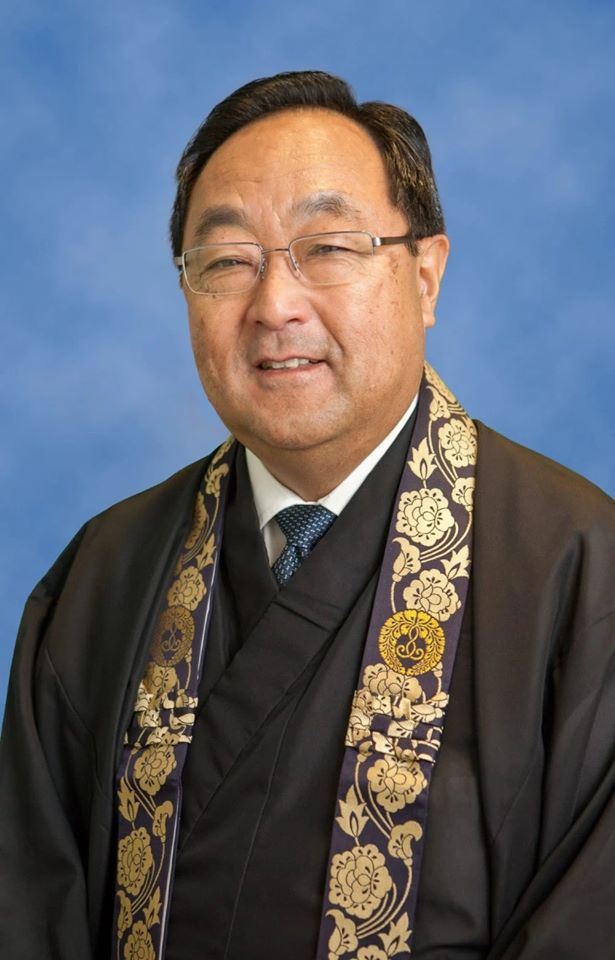Practical Buddhism and Truth Level Buddhism
Rev. Marvin Harada, Bishop, Buddhist Churches of America
All of the great masters and teachers in Buddhism write about and express Buddhism at a very deep, and profound level of truth. However, most of us are more interested in a more practical level of Buddhism. We ask questions like, “Will Buddhism help me to live a happier life? Will Buddhism help me to ease my stress and anxiety? Will Buddhism help me to live a more meaningful life?” We might even ask questions like, “Will Buddhism help me lower my blood pressure? Will Buddhism make me more successful in business?”
We might encounter a “gap” between the profound, truth level of Buddhism, and where we ourselves are at the practical level. How do we bridge that gap?
There are contemporary Buddhist teachers, like the Dalai Lama, who is presenting Buddhism from this very practical side, such as in his bestseller, “The Art of Happiness.” Another writer, Dan Harris, the author of “10% Happier,” is also presenting Buddhism in a very pragmatic manner. Through meditation, he was then led to Buddhism. When someone asked him why he meditates and is into that “Eastern” stuff, he simply answered, “It makes me 10% happier.” His friend said, “Wow, I’d take that.”
I think that Shin Buddhism is behind other contemporary teachers in trying to bridge that gap between the truth level and the practical level of Shin Buddhism. Without seeing some kind of practical benefit for our life, modern man will not be interested or motivated to pursue Buddhism to the “truth” level.
But there are some things that Buddhism “won’t” get you. Buddhism won’t get you a million dollars, but it can make you “feel” like a million dollars, no matter how impoverished you might be. Buddhism won’t cure your cancer, but it can give you the spiritual strength to face, even embrace your cancer, and to accept it, whether you recover from it or not.
I would like to share an example of what it means to encounter the truth level of Shin Buddhism.
Some years ago, we lost a wonderful member at the Orange County Buddhist Church, Scott Morris, to ALS, or Lou Gehrig’s disease. ALS is one of the saddest illnesses to get, because there is no cure for ALS. If you get cancer at least there is some hope of treatment, like radiation, surgery, or chemotherapy. ALS is a very debilitating illness, as it starts first with your feet and legs, paralyzing you, then it moves up your body, to where you cannot use your hands or arms, then you cannot speak, and eventually it takes your life when you can no longer breathe.
When Scott was first diagnosed with ALS, we had just started a support group, called “Living Through Illness.” Scott regularly attended that support group. In one of our sessions, Scott was feeling sad that most likely he would not live long enough to be at his son’s high school graduation, or to walk his daughter down the aisle at her wedding someday. I thought about what I could say to help Scott, so I suggested that, while he was still able to write and use his hands, that he could write a letter to his son that he could read someday when he graduates from high school, and he could write a letter to his daughter that she could read on her wedding day.
One month passed, and at the next gathering of our support group, Scott said, “Sensei, I wrote something.” I thought that maybe he had written one of those letters, but instead he shared the following poem.
I have ALS, — and I am grateful.
I am grateful to retire early to be with my family.
I am grateful I have family and friends that are so supportive and hopeful.
I am grateful I can still walk and get around.
When that is gone –
I am grateful I can still use my hands to feed myself.
When that is gone –
I am grateful I can still breathe and laugh and feel.
When that is gone –
I am grateful I had a wonderful life.
And when that is gone –
Namuamidabutsu.
By Scott Morris
For Scott, Namuamidabutsu was not just a word or a recitation. It was a deep and profound truth, something that transcended even his own life and death.
That is the point where practical Buddhism and truth level Buddhism merge and become one.
Namuamidabutsu,
Rev. Marvin Harada
Bishop
Buddhist Churches of America

